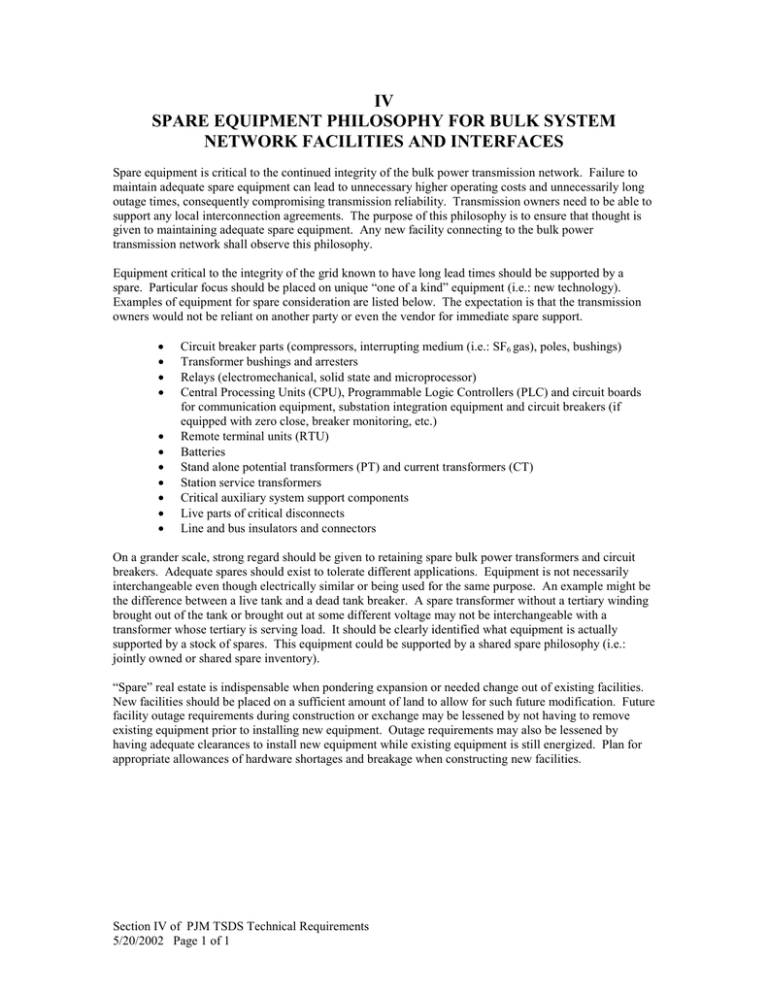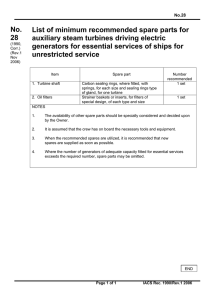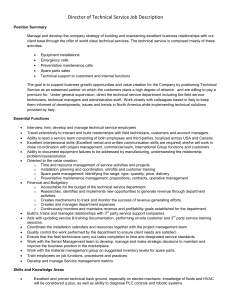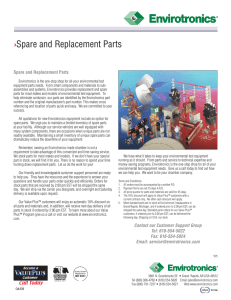Spare Equipment Philosophy
advertisement

IV SPARE EQUIPMENT PHILOSOPHY FOR BULK SYSTEM NETWORK FACILITIES AND INTERFACES Spare equipment is critical to the continued integrity of the bulk power transmission network. Failure to maintain adequate spare equipment can lead to unnecessary higher operating costs and unnecessarily long outage times, consequently compromising transmission reliability. Transmission owners need to be able to support any local interconnection agreements. The purpose of this philosophy is to ensure that thought is given to maintaining adequate spare equipment. Any new facility connecting to the bulk power transmission network shall observe this philosophy. Equipment critical to the integrity of the grid known to have long lead times should be supported by a spare. Particular focus should be placed on unique “one of a kind” equipment (i.e.: new technology). Examples of equipment for spare consideration are listed below. The expectation is that the transmission owners would not be reliant on another party or even the vendor for immediate spare support. · · · · · · · · · · · Circuit breaker parts (compressors, interrupting medium (i.e.: SF6 gas), poles, bushings) Transformer bushings and arresters Relays (electromechanical, solid state and microprocessor) Central Processing Units (CPU), Programmable Logic Controllers (PLC) and circuit boards for communication equipment, substation integration equipment and circuit breakers (if equipped with zero close, breaker monitoring, etc.) Remote terminal units (RTU) Batteries Stand alone potential transformers (PT) and current transformers (CT) Station service transformers Critical auxiliary system support components Live parts of critical disconnects Line and bus insulators and connectors On a grander scale, strong regard should be given to retaining spare bulk power transformers and circuit breakers. Adequate spares should exist to tolerate different applications. Equipment is not necessarily interchangeable even though electrically similar or being used for the same purpose. An example might be the difference between a live tank and a dead tank breaker. A spare transformer without a tertiary winding brought out of the tank or brought out at some different voltage may not be interchangeable with a transformer whose tertiary is serving load. It should be clearly identified what equipment is actually supported by a stock of spares. This equipment could be supported by a shared spare philosophy (i.e.: jointly owned or shared spare inventory). “Spare” real estate is indispensable when pondering expansion or needed change out of existing facilities. New facilities should be placed on a sufficient amount of land to allow for such future modification. Future facility outage requirements during construction or exchange may be lessened by not having to remove existing equipment prior to installing new equipment. Outage requirements may also be lessened by having adequate clearances to install new equipment while existing equipment is still energized. Plan for appropriate allowances of hardware shortages and breakage when constructing new facilities. Section IV of PJM TSDS Technical Requirements 5/20/2002 Page 1 of 1





